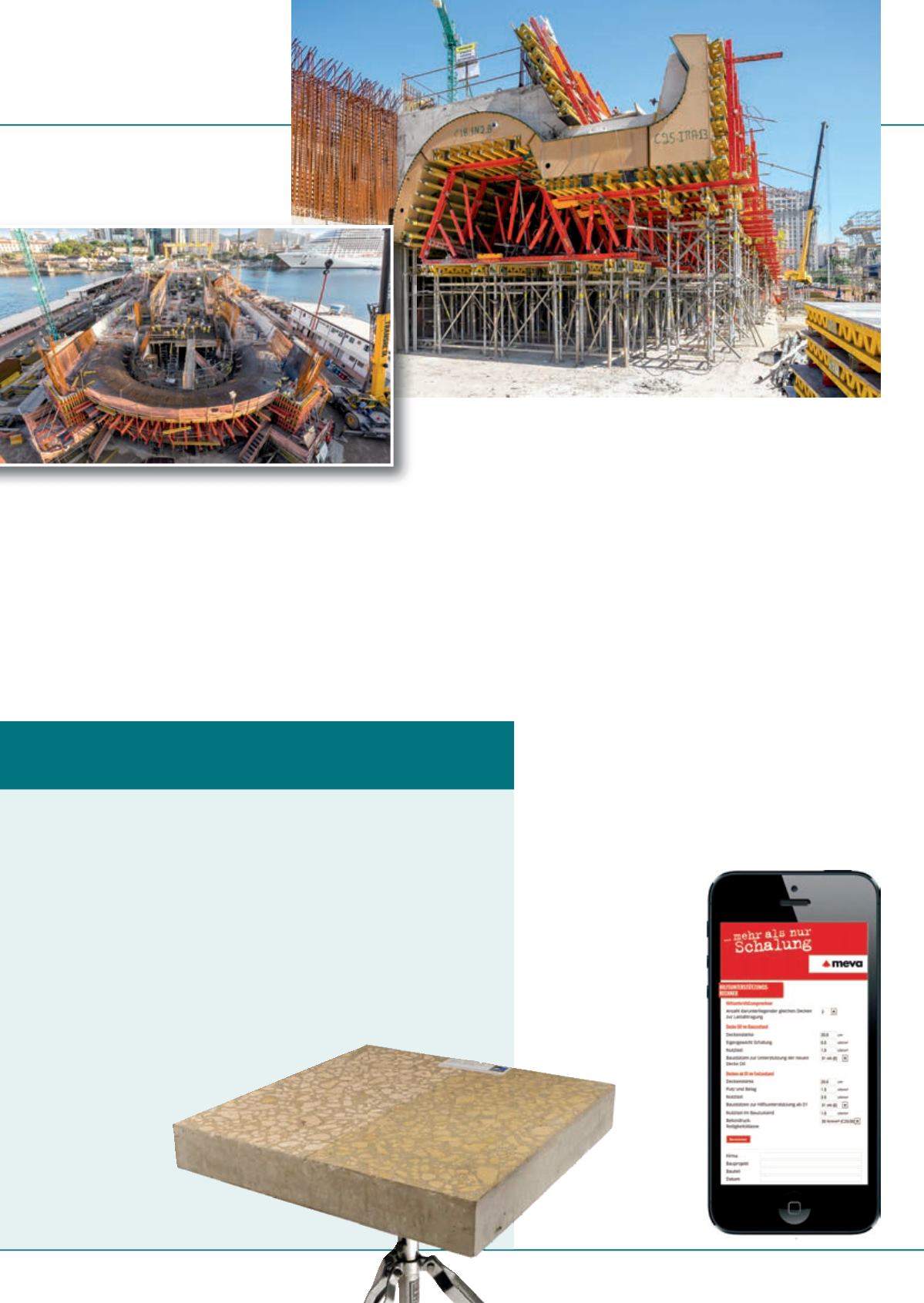
international
construction
december 2014
CONCRETE
24
Latest technology
Lime-Pozzolan Concrete
Less CO
2
than Portland cement with ancientmaterial
T
raditional concrete does not farewell as a sustainablematerial. Large amounts of
energy are required to produce it in a kiln, and the chemical reaction associatedwith
thismeans a tonne of CO
2
is produced for every tonne of concrete.
In response to this problem, designer Ramboll UK has beenworkingwith theUniversity
of Bath to develop an alternative, and has turned to an ancient binder that has proved its
durability sinceRoman times, lime-pozzolanmaterials. Laboratory testing and small-scale
industrial trials shown structural performance is comparable to Portland cement concrete.
Further strides are beingmade in the speed of set, workability, compressive strength and the
use of water-reducing admixtures to improve performance.
In terms ofmanufacturing, lime is produced at a lower kiln temperature than Portland
cement and the pozzolanic component – amineral material containing alumino-slicates –
could potentially be provided bywastematerials – from sewage sludge ash to coconut
husk ash.
Ramboll says it has started exploring commercial uses
for suchmaterials, developing a polished lime-
pozzolan concrete floor screed solution
for aUK school building project,
which usedmaterials
already on site as
the aggregate. The
embodied carbon for
this floor was found to
be up to -45% less than
that of aCEM1 polished concrete
floor and -25% less than that of a vinyl floor.
building, which is being built on aman-made island in the bay.
The contract for this is due to be awarded soon.However, work
is alreadyunderwayon the203m, 43 storeyCrescentCityoffice
tower, whichwill be shaped like a torch and overlook the entire
area. Also under construction is the Crescent Place 8-storey
shopping centrewith a 170m residential tower accommodating
168 apartments on 32 floors.
Gilan Holding is the developer of the complex project, with
the design byHeerimArchitects&Planners from SouthKorea.
The building contractor is Ilk Insaat MMC, a Doka customer
for many years which also used the company’s formwork to
build the adjacent Port BakuResidence.
Baku is susceptible to high winds, which limits the use
of cranes. However the Crescent development is on a tight
timescale, so it was clear from the outset that the project would
need a formwork solution that did not rely on cranes.
This ledDoka’s engineers to propose the use of the company’s
SKE50 and SKE100 automatic climbing formwork systems.
“The schedule is extremely tight. Thanks to our formwork
solution, our customer saves time and canmanage one floor per
week on average”, Doka project managerThomas Staffenberger
explained.
These automatic climbing systems also meet the strict safety
requirements and include the Xclimb 60 protection screen,
which protects workers from weather conditions as well as
falls. Doka said the increased sense of safety improves personal
performance and as a result total productivity.
Within the climbing system, Doka’s Top 50 large-area
formwork is used to erect the massive core walls. This is pre-
assembled but it allows for any adjustments required due to the
architectural and form-tie pattern.
For construction of the floors, Doka’s d2 load-bearing tower
system is being used along with the TLS table lifting system
attached to the automatic climbing formwork. This allows
for rapid and crane-independent repositioning of the floor
formwork.
Mert Ersoy, projectmanager at Ilk InsaatMMC said, “Doka’s
formwork solution is a perfect match for our requirements:
high-speed construction progress, economic processes and for
expenditures for personnel.
And in spite of all this, or
perhaps precisely as a result,
ongoing safety of our crew is
always the utmost priority.”
Another key factor in the
project’s success is that Doka
was involved early in the
project. It provided input
at the planning stage, and
Doka instructors trained the
>
Meva has
launched a
smart phone app to
help calculate for slab
reshoring operations.
Peri supplied 3,500 bespoke formwork
elements for theMuseum of Tomorrow
project in Rio de Janeiro, Brazil.
The structure
extends 300m
into the bay.


